Social Technologies and the Art of Collective Expression
Over the last few years I have been developing and practicing social experiments of different sorts. When people ask me what I do I have lacked a precise term, and have alternated between ‘cultural/social hacking’, ‘socionautics’ and ‘social experimentation’. What unites all of these at their core is a practice: experimenting and exploring how we can interact with each other.
Growing up in the centre of Europe I have always felt that our collective expressions were limited without good reason, that there is more to being with friends and strangers than hopping from bar to bar or losing oneself at parties. That the way we treat each other on a daily basis can be more than going to schools, to work, and spending “quality time” together at cultural events. That there is more to be explored around what it means to be in love, to feel connected, to enjoy life. Hence, I felt drawn to environments that were doing “life” differently and to techniques and methods that enabled me to incorporate a wider variety of collective expressions into my everyday life.
Since the current limitation on our social life (for future readers: I am writing this during the COVID-19 lockdown) has paused almost all my activities, I want to use this time to reflect on what I have been doing for these last few years. And not only to reflect but also to write some of my insights and experiences down, and potentially create a reference-point for myself and other practitioners around similar activities. That said, all of what I am going to write here was born out of collective works, out of heated discussion with my friends and collaborators who to this day inspire and motivate me. The pictures I have included in this essay are a reference to some of the encounters that have grounded these reflections in lived experience.
Throughout the years I have learned, used, and developed different techniques to create social experiments. I find these techniques useful not only for playing with social conventions, but also because they have given me more agency in the way I approach social situations and my everyday life in general. Lacking an established term,I will call these techniques Social Technologies*, and the way of using them the Art of Collective Expression. Both of these terms have their limits — to which I will return later — but they do summarize the core of this practice well: developing and applying a systematic toolbox to modify and change how we relate toeach other and the environment we are in.
I will keep using the term “social experiment” to describe any sort of intervention that alters what we perceive as conventional. Some of these interventions are not experiments by definition. They are not done with the intention of “testing” something. Most times they are done very much “for real”, with no greater hypothesis or theory to validate. Still, we enter unknown territory — to which, I believe, we should keep an open, experimental mindset to see the transformative impact of our actions.
This essay will not go into social technologies on the practical level of describing what techniques exist and how to use them. Even though I plan to write some of these down in time, I have found it much easier to share this knowledge through workshops. In this essay I will instead reflect more on the use of social technologies and the Art of Collective Expression.
The Art of Collective Expression
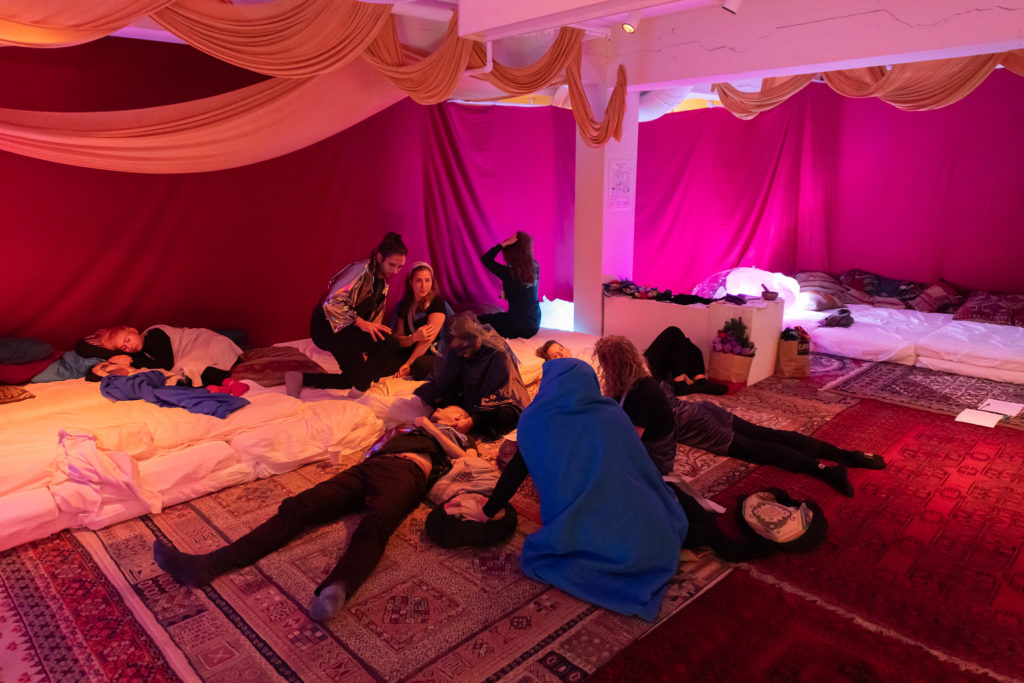
We have come to see the Arts as a separate realm from our everyday life. We even have special places where we go in order to experience art. That we go to museums, theatres, opera houses, libraries and so forth, underlies a perception that the respective practices are in some way special. Also the recent decades have seen an increase in art academies: more and more writers for example have studied “creative writing”, something that was unheard of a hundred years ago.
I want to stress, however, that any practice we consider art is not a special activity but a very ordinary one. We all write, dance, paint, draw, sing, play to some degree in our everyday life. The activity is everything but special. Art is then less about what activity I do but rather the relationship I have with that activity. I do art when I become conscious about what I am doing, when I reflect on the activity and train my body and mind in order to make the activity articulate my visions.
When I use the term art here, this is what I mean: We all relate to each other everyday, it is the ordinary thing to do and an essential part of what it means to be alive. And like all arts I can do so consciously, I can reflect on the way I relate to and interact with others, and perceive this as a form of expression. I furthermore can train myself in core techniques and methods that are required in order to pursue this practice in a more profound way. Additionally, I don’t believe that on some magical day I will have trained and reflected enough, and only then am I a full artist. That is why I defined art as a relationship: I am in a dynamic process with a practice, and, as all relationships do, this one will change and transform (sometimes I might even break up with it). I am an artist from the moment I start this relationship. Thus, when I go to one of these places of art, I go there to witness a deeper/more intricate expression of this kind of relationship.
My sense is that we often understand the idea of expression on an individual level. That it is me who feels a need to express myself, that it is you who wants to express yourself. Yes, also institutions and groups express themselves sometimes (eg with an official statement or a video) but the manifestation of that expression remains a thing that could be formed by an individual. What I mean with collective expression goes beyond those forms. Collective expressions are expressions that can ONLY be formed through a collective effort. Examples of this are cafés, rituals, games, dinners, a festival, a workshop, a meeting etc. When we as individuals take part in any of the listed activities, we express much more than just a single self. We voice a way of relating to each other, and in the same way a novel can be described as an expression for love, anger, political engagement etc., I also think that social expressions can be described in such a way.
Thus the materials that social technology works with are the dynamics, rules and conventions that affect the way we interact and relate with each other. And this is where this art differs from the “traditional” art forms. Most art forms express themselves in pockets within everyday life: they often create heterotopies, places that are both here and not-here, places we can visit and leave again. The art that I am trying to describe here does nothing of the sort. In fact, it wants to be right in the everyday, it wants to affect the everyday. Conventions and rules are at the heart of what enables us to be social beings. Therefore social technologies act and meet people in a place where the usual safety net of arts is no longer available to them, where uncomfortable or daring things can no longer be swept off with a simple “It is just art”. That is why I want to introduce the following principles.
Principle of Interconnectedness
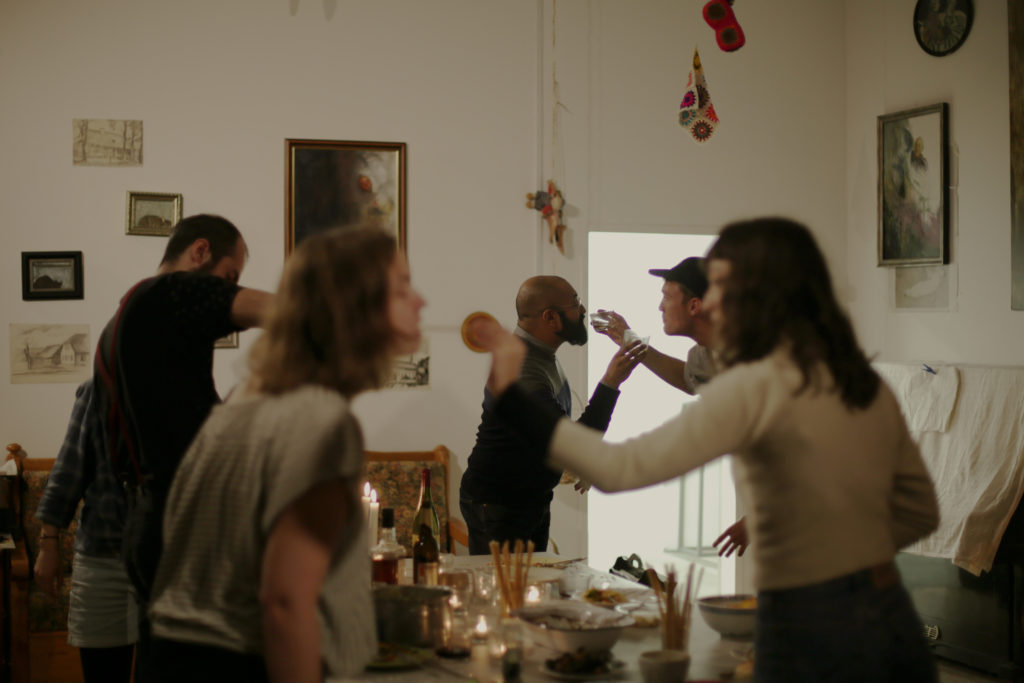
To be honest, I am not fully happy with the term ‘technology’ but I haven’t found anything better to replace it yet.
The reason I use this term in this context: there are effective techniques and methods you can use to affect social situations and there are some parameters of social situations that, if changed in a certain way, can completely reshape the experience people have of that situation. You can learn those techniques and methods and develop a judgement of what will most likely cause what, and you can modify and adapt those techniques and methods to your specific context. For this reason, the term ‘technology’ defines the practice well.
However, the word ‘technology’ is strongly associated with a scientific perspective on the world, with an engineering mindset, and this is where the term falls short. Usually, technology includes the idea that we can control an environment through a specific device. That a specific technology enables us to exercise control over a particular thing. Dams are a technology to control the flow of water. Medications are a technology to control the body. Public relations is a technology to control people’s emotions. The logic always goes: Let’s implement this technology in order to have that outcome.
If there is one thing that climate change teaches us then it is this: no matter how much technology we arm ourselves with, we will not be able to control nature. And this is true for anything else we want to exert control over. (Also for governmental repression by the way.) Still the mindset exist, and that’s why I want to exclude it right away from my definition.
There is a more fundamental flaw in this mindset: the idea of separation. Through this lens of technology we perceive an other that we want to have control over. We want the other to work the way we want them to work, even if that means forcing ourselves upon them. Making people believe that they will be happy with these new sneakers shares a similar approach to extracting even more fossil fuels from this planet. This other needs to comply with my will, and thus I will do everything for this other to do that.
A social technology that wants to exert control over a social situation and will force anyone involved with it to comply with whatever intention it has, is nothing other than manipulation.
I propose a different mindset and I call it the Principle of Interconnectedness. It contains two ideas:
- As I already mentioned, this particular art form does not work from the outside but from within the social conventions and practices it seeks to change. When I use social technologies I always see myself as part of the social constellation. There is no other to affect, there is the collective of which you, I and every other participant is a part. I engage in a different practice for my own sake, knowing that I can only live the experience to the fullest with other people. My approach is therefore guided by a sense of humility.
- Even though I often have a good sense of how a specific technique will affect a social situation, I try not to expect it to turn out exactly the way I imagined. In fact, most often I see a mix of things I anticipated and things that completely surprise me. As a matter of fact, I think that this is actually the beauty of social experimentation: there will always be something that surprises me, something that emerges. I interpret this as the signs of life, of things being interconnected, reacting to each other, creating outcomes that no-one could have predicted. Social technologies are techniques to pave the way to something that was unknown before. They are a means to an unknown end, maybe even a means without an end at all.
Principle of Invitation
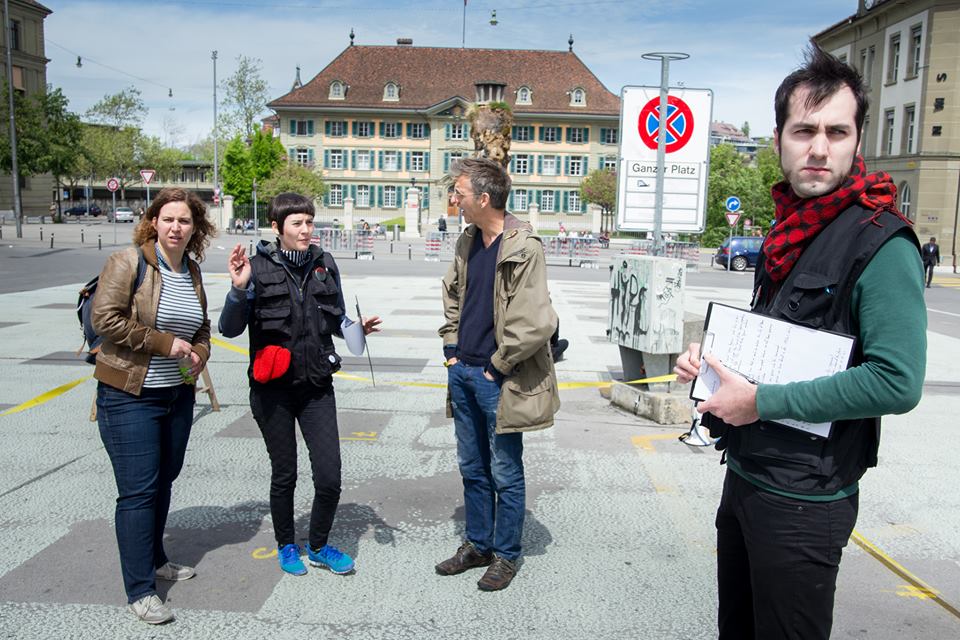
As I have pointed out in the Principle of Interconnectedness, the biggest danger that social technologies run into is that they can be used as a way of manipulating other people. Being able to affect and change social situations is a form of power; as with any form of power, it can be abused. Denying this will only cause me to be oblivious of when I am being abusive and make me defensive if I’m criticised for it.
A way to circumvent any form of abuse is to be open about what social technology I am using and with what intention; in short, to be transparent. This way all participants know what they are taking part in. It gives them the opportunity to prepare, and helps them to take better care of themselves and others during an experiment. They also have a point of reference when something I am doing/proposing is odd, and this helps them to articulate any form of uncomfortableness.
To achieve all of that, I follow the Principle of Invitation. Each technology I put into place is a gift, an invitation for a different kind of social expression and experience. It is never, I repeat: never an obligation to follow. Most importantly, this invitation remains open throughout the whole experience. No-one should feel forced to continue an activity, even if they have been part of the experience so far. Each and everyone is free to leave, opt out at any point without any pressure to explain and justify why they choose to do so. This is both true for participants who have followed my invitation and for myself as well. Even though I try to be supportive for any discomfort that arises, I trust the self-reliance of each participant.
Related to the Principle of Invitation is the question of whether or not the spaces that social experimentation offer are safe spaces. The short answer is: no. The interconnection of all factors and actors in a situation makes it impossible to control every possible dynamic and outcome. Furthermore, it is impossible for me to be aware of all triggers that participants bring into a social experiment. I will not use the social technology to create an unsafe space (without communicating that at least), but I simply cannot guarantee it. Again, I need to trust participants’ self-reliance, and the form of invitation is also an invitation to everyone personally to judge whether or not to participate.
Principle of Agency
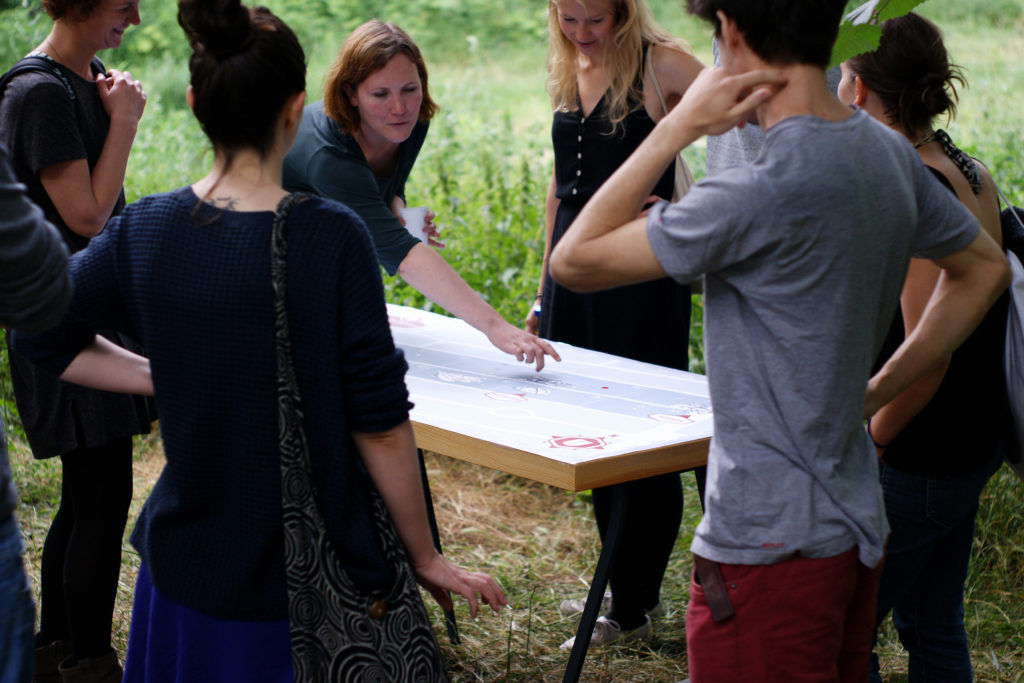
Contrary to popular belief, freedom is not the absence of all rules, nor even the absence of all restrictions. Consider a painting assignment that goes: “You can paint whatever you want with whatever tool you want.” According to this idea of freedom you have been given all the freedom you could imagine in order to express yourself. In fact most people will not know what to do with it, especially if they are not used to painting on their own.
I don’t think that this confusion is due to a person’s lack of imagination or any other incapability. I think it is caused by the way meaning is created. Something only starts to become meaningful in relation to its frame. These sentences for example only make sense to you because you read them in the context of other words, in the context of what you know of me and so on. In fact, I can only express myself because of the rules of language, because of the limits that this framework puts on me. So, if you want to make a meaningful decision on what to paint, you either have a framework yourself or I provide you with one.
Each framework is a set of limitations of what is possible. That is the very essence of a framework. In order to activate myself and others I therefore need a framework that gives me the opportunity to express myself in a meaningful way, that provides me with different options on what to do, and that allows me to act in accordance with the option I’ve chosen. What arises from such a framework is what I call agency: a diverse array of meaningful options that I am able to act upon.
Social technologies then are a tool to shift and alter the agency that people have in a given situation. While they often rule out conventional behaviours, they open a new array of possibilities. Take a moment to imagine what happens if you sit down for a dinner and agree on the following: “No one is allowed to feed themselves.” This is quite a strict rule that affects probably the most fundamental convention of eating. However, you will find yourself doing something that you would most likely never do without this rule, namely feeding other people and being fed by others. And through this you will also experience a different kind of freedom: since we never really feed each other (except children or severely sick people), there are almost no rights and wrongs in how to do that and no conventions around how to “properly” feed someone else. There is room for you to “freely” explore.
There is quite a lot to be said about what makes a framework powerful (meaning what set of rules offer you strong agency without making your moves somewhat random), how to introduce it, how to help people to be daring and how to help them not to default to what they know already without controlling them (something I call agency authority). On these topics there is a lot to be learned from LARPs, social and urban games, and relational practices, while there are also some significant differences on how to apply techniques developed in these contexts. Suffice it to say for now that a social technology should aim to create strong agency for all participants, so that the collective expression can unfold in a surprising way — according to the interconnectedness of all the actors and factors.
Principle of Play
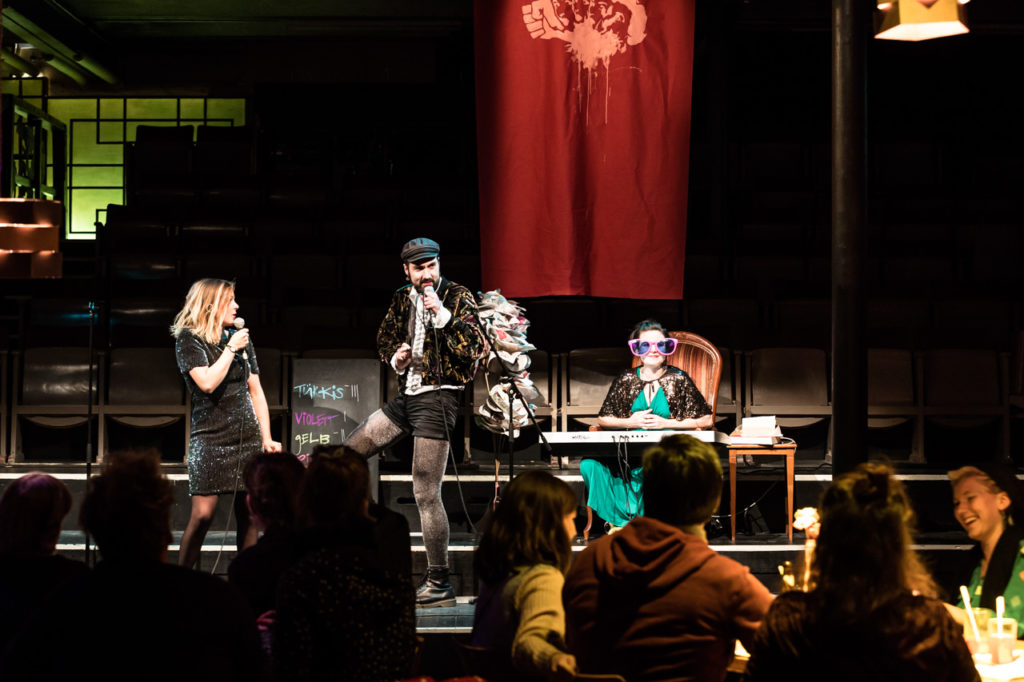
As I have written at the beginning, my story with social technologies started with the sense that there is more to collective experience than what I was seeing in my everyday life. On top of that I also came to an understanding that both my political reflections and my ideals of a more loving, caring, supportive world were in vain if I didn’t find a way to translate them into how I relate with everyone around me on a daily basis. Oftentimes I have found myself then getting stuck on the expectation that I need to find proper answers, solutions to problems, using the tools that I have. I got stuck in an engineering mindset where I thought I could use my techniques in order to control the political landscape.
Very seldom have I seen a social technology have exactly the effect that I thought it would have. They do not work in a linear way. And it is almost weird to think that they would if I want to trust the Principle of Interconnectedness. However, they do work, and the way you want to make use of them should reflect that. Here is an incomplete list of my observations:
- No matter what social technology you use, it always creates change. Even if that is only for yourself, and only for a short period of time.
- Social technologies don’t work consistently. Each group of participants acts differently, hence creating a unique collective expression each time.
- Repeating a social experiment with the same group of participants will not create the same experience as before. People learn the language of the new framework — and find new ways to use it.
- Rarely does a social experiment not have awkward moments. Don’t fight them. This is where new social conventions are born.
- There is something worthwhile in changing social conventions that is beyond the actual change. The meta-experience of doing something strange/new/daring/etc. together, of exploring other ways of relating and interacting with each other is a valuable experience in itself.
From all of the above I conclude that the most important thing about social technologies is: Try them! Play! There is no knowing what will happen and what effects the alteration will bring, and there is no point in “designing” an experience with every possible detail beforehand. You will get stuck in the thought of “This should be like this!” and eventually get frustrated.
From what I have written so far, it should also have become clear that all social experiments are co-created (that doesn’t necessarily mean that everyone contributes in the same way). Everyone has agency to act, react, and define the space we are in, everyone gets to play on the rules and interpret how they are embodied. This is why you need room to play. Through play we calibrate ourselves to our surroundings, test our and other people’s limits, and find a balance together.
Principle of Emotional Involvement
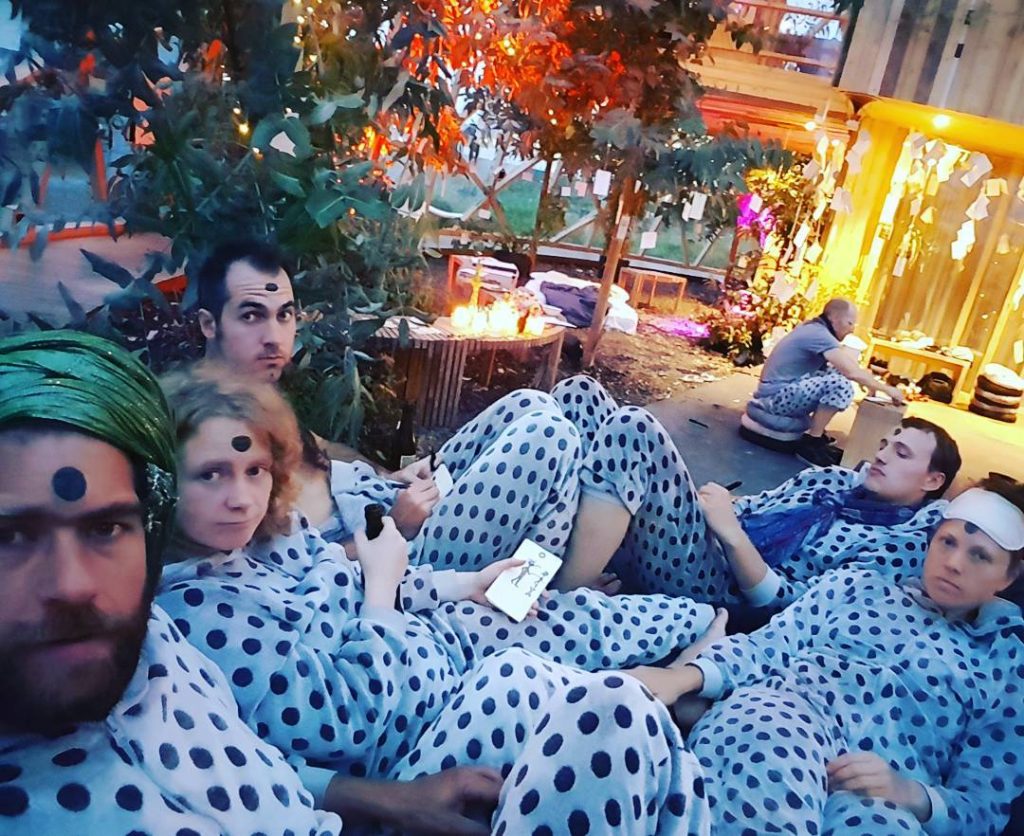
The last principle I want to introduce is the Principle of Emotional Involvement. It is build upon a very simple assumption:
Every person is constantly experiencing the world and responding to it emotionally. We react the strongest when we feel touched in our most vulnerable spots. Oftentimes we do not feel safe to reveal these parts of ourselves, making our actions sometimes hard to understand from the outside.
In my experience social conventions often function as a shield, a mask behind which we can be social without revealing too much of ourselves. This is not per se a bad characteristic of social conventions, but it is something to keep in mind. Because when we apply a social technology we strip off parts of that shield, and this in turn makes us more vulnerable.
Whenever we engage in a social experiment, we should not forget that all participants are human beings — not mere actors who fulfill a function inside a choreography. It sounds common sense but too often have I seen this disrespected, especially in interactive art forms that want to be provocative. In those cases the aesthetic expression seems to be prioritised over the emotional safety of their participants. No sort of experimentation is worthwhile if it leaves some or all participants (unwillingly) hurt or injured (both physically and emotionally). The same is true for bystanders who happen to find themselves inside an experiment without proper introduction.
As I have said earlier, social experiments are not experiments by definition. They are experimental since they are trying out ways of relating, of doing things together in an unfamiliar way, but they are not only, as a friend put it, poking someone/something with a stick and taking notes about their reactions. Whatever happens during a social experiment is real, the reactions and emotions are real, and going into a social experiment means committing to and taking responsibility for the realness of that experience. I have found that the power of social experiments actually arises from the very fact that our conventional shields are down, that everyone has stepped into a space with more or less the same naivité. There are no expectations of how to react, how to behave — simply because we haven’t done this before.
Again, this is why social experiments cannot be safe spaces but they can be learning spaces in which we play with the limits of what we are collectively allowed to do. The emphasis lies on the word “play” here, leaving room to calibrate and potentially retreat if things get too uncomfortable. If you happen to be the one inviting, try to bring as much empathy and compassion to the social experiment as you can. Don’t make this about yourself. Also don’t make it not about yourself. The interplay between the individual and the collective, how one affects the other, and when to shift attention between the two, is maybe one of the most central dynamics of the Art of Collective Expression.
***
None of these five principles — the Principles of Interconnectedness, of Invitation, of Agency, of Play, and of Emotional Involvement — existed that clearly for me when I started doing social experiments. They were born out of doing, playing, practicing, and I expect them to change and transform as I go on. I have attempted to summarize them here, taking a picture of something that has been present and in flux in the back of my mind.
As with all technologies, social technologies can only be judged by the way they are used. In the way they are being handled, they describe a relationship between the user and an other. Not an other who is separate from the user but an other who is connected to it. The application of a technology builds a connection between these two things and defines the conditions under which they meet.
My take on the Art of Collective Expression describes how to approach playing with the conditions under which we meet. It is driven out of a desire to explore the social everyday, to explore new forms of expression of what it means to be human, what it means to be alive.
And I neither want to nor can I do it alone. So please take this little piece of writing as an invitation to debate, to reflect, and most of all: to play with me.
* I am well aware that there is an academic discourse connected to the term “social technologies”. I chose not to reference it, mainly because my usage of the term is not derived from that discourse, but from my (artistic) practice with social experiments.